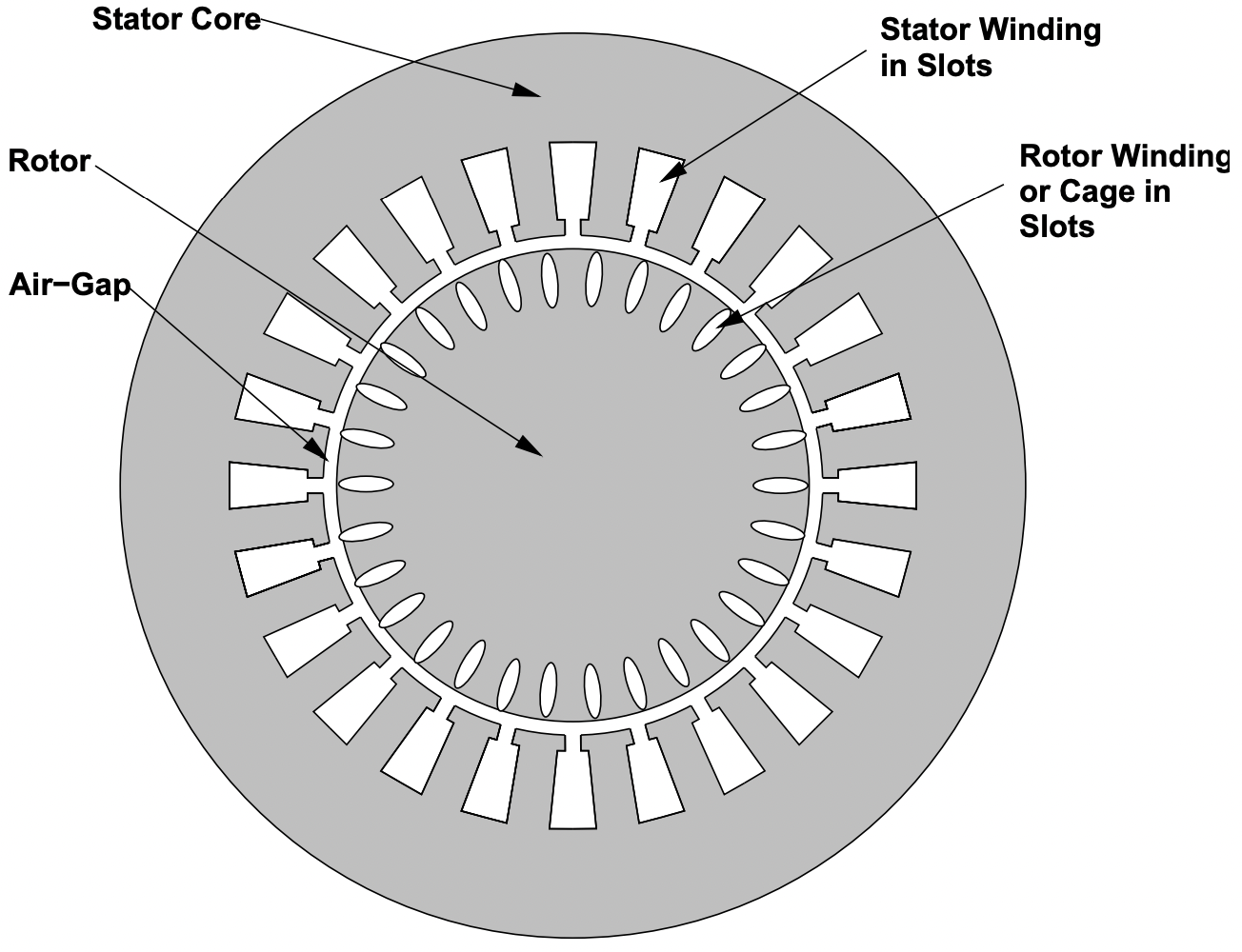10: Analytic design evaluation of induction machines
- Page ID
- 54448
Introduction
Induction machines are perhaps the most widely used of all electric motors. They are generally simple to build and rugged, offer reasonable asynchronous performance: a manageable torque-speed curve, stable operation under load, and generally satisfactory efficiency. Because they are so widely used, they are worth understanding.
In addition to their current economic importance, induction motors and generators may find application in some new applications with designs that are not similar to motors currently in commerce. An example is very high speed motors for gas compressors, perhaps with squirrel cage rotors, perhaps with solid iron (or perhaps with both).
Because it is possible that future, high performance induction machines will be required to have characteristics different from those of existing machines, it is necessary to understand them from first principles, and that is the objective of this document. It starts with a circuit theoretical view of the induction machine. This analysis is strictly appropriate only for wound-rotor machines, but leads to an understanding of more complex machines. This model will be used to explain the basic operation of induction machines. Then we will derive a model for squirrel-cage machines. Finally, we will show how models for solid rotor and mixed solid rotor/squirrel cage machines can be constructed.
The view that we will take in this document is relentlessly classical. All of the elements that we will use are calculated from first principles, and we do not resort to numerical analysis or empirical methods unless we have no choice. While this may seem to be seriously limiting, it serves our basic objective here, which is to achieve an understanding of how these machines work. It is our feeling that once that understanding exists, it will be possible to employ more sophisticated methods of analysis to get more accurate results for those elements of the machines which do not lend themselves to simple analysis.
An elementary picture of the induction machine is shown in Figure 1. The rotor and stator are coaxial. The stator has a polyphase winding in slots. The rotor has either a winding or a cage, also in slots. This picture will be modified slightly when we get to talking of “solid rotor” machines, anon. Generally, this analysis is carried out assuming three phases. As with many systems, this generalizes to different numbers of phases with little difficulty.
 Figure 1: Axial View of an Induction Machine
Figure 1: Axial View of an Induction Machine
- 10.1: Induction Motor Transformer Model
- The induction machine has two electrically active elements: a rotor and a stator. In normal operation, the stator is excited by alternating voltage.
- 10.2: Operation- Energy Balance
- Now we are ready to see how the induction machine actually works.
- 10.3: Squirrel Cage Machine Model
- Now we derive a circuit model for the squirrel-cage motor using field analytical techniques.
- 10.4: Solid Iron Rotor Bodies
- Solid steel rotor electric machines (SSRM) can be made to operate with very high surface speeds and are thus suitable for use in high RPM situations.


